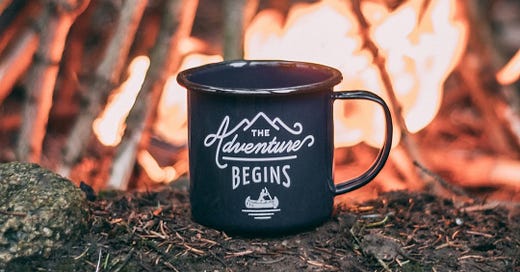It’s 2025 and the year has just started. At the time of publication, there are around 8688 hours left and it is worth considering what this year holds for bioacoustics, biodiversity and Earthstream as a startup. Here’s the run down of what we’re planning.
Last year when we founded the company our main goal was figuring out how to create viable biodiversity reporting systems that were relatively low cost and scalable. Since imaging is such an established field (drones, satellites, and camera traps are all imaging systems) we decided to focus on acoustics. It was a brave decision because we needed to solve problems like bandwidth, integrity, and data management. In the end, we built a prototype sensor and a communications protocol which got us around eighty percent there, laying a strong foundation for the future. We can gather biodiversity data through sound, in remote areas, and process it accurately. It all works — but polishing is required.
So what comes next?
Community Building
Creating a culture of listening is a core part of our mission, and building a community that wants to participate in “tuning into nature” could be a creative, fun, global, experiment.
How many people can we get to tune into the dawn chorus? Can we start looking for rare and unusual birds through sounds? Can we listen to whale songs? What about citizen science? Can we start a movement?
We hope so — at the moment, we’re exploring various themes around the gamification of the “Nature Data” collection. Not because this is necessary, but because it might be fun to be part of a global movement that is doing this kind of listening. On the gamification side, a lot of good work has been done around the value and importance of games and gaming by, for example, Jane McGonigal and the ways that games can be used to change the world.
Collectively, we could do with some nature “epic wins” — just like expression the face below. It’s in the optimistic crinkle of the eyes and the mild look of fear, this gamer is about to experience an epic win: A result so improbable it’s difficult to believe until after it has happened.
Let’s get some improbably great results on behalf of Mother Earth in 2025.
Sensor Networks
We’ve been engaging with rewilding projects in various parts of the world to run sensor pilots. Each pilot has around ten sensors set up in a mesh to collect acoustic data over a few months; the sensors have solar panels so that they can be in the field for a while, and data is collected remotely. The goal is to use the data to make baseline wildlife measurements within areas that are being rewilded and areas that need to be conserved. The
As sensors collect data about the environment, we’re collecting data about the sensors: We’re product testing because building reliable and accurate devices is one of our goals, and we need to know how our sensors will work over a few months under different ambient conditions.
We’ll be putting more details out around specific pilots as we get them started, so watch this space. Currently, we’re looking at sites in Brazil, Indonesia and closer to home Pondoland, South Africa, the home of Nelson Mandela’s tribe.
We’re staying open minded, so if you want to add a project to the list, feel free to message us either here or via our site: www.earthstream.live. The costs for a ten sensor pilot ranges from around $3000-$5000 depending on where in the world it is being run.
Fundraising
Building startups and going on epic quests requires resources, so we are actively fundraising. Not investment advice, just stating a fact!
We’ve built some fabulous technology over the last six months and the vision is for us to continue to build technology — and to scale up on tuning into nature. This means getting sensors into production and deployed all over the world as we work with rewilders and regenerative farmers to support biodiversity measurements and metrics.
In terms of positioning, globally, there is a move to rebuild natural capital that is taking shape: The Kunming-Montreal Framework for Biodiversity includes a $200BN funding commitment. We aim to use our sensor network to support impact micropayments and funding deployments to those folks who are doing the work on the ground of rebuilding ecosystems, rebuilding forests, and creating global shifts. Every dollar counts — and getting these dollars to those at the frontline at the least possible cost is a core aspect of the solution that we are quietly building.
Again, if we’ve piqued your curiosity feel free to reach out.
Calls from the Wild
The title of this piece is a little strange: At the time of writing, Jack London’s book The Call of the Wild which involves a family dog being kidnapped and sold into servitude as a sleigh dog, only to rediscover his lost wildness came to mind.
This is a book from long ago — when people were still reading books. It feels like we’ve lost part of our wild connection to nature within modern society, and reviving our relationship with nature is really about reviving this wild part of ourselves.
Here’s to the start of something epic.
Thank you for reading.
Push the buttons.






